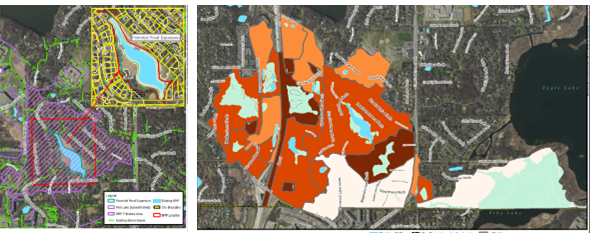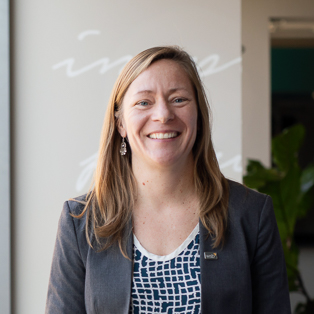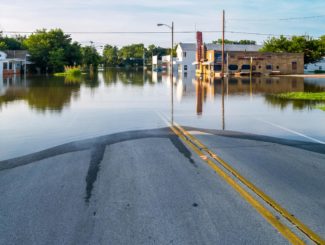By Earth Evans, Director of Water Resources, WSB
The new 2020 MS4 General Permit is now available from the Minnesota Pollution Control Agency (MPCA). While there are lots of familiar questions in the permit, the Total Maximum Daily Load (TMDL) application form is new territory for many MS4s. The goal of the TMDL application form is to document progress towards meeting waste load allocations (WLA) for impaired waterbodies that the MS4 discharges to. Unlike previous applications that allowed for a simple qualitative tracking of progress (i.e. listing education programs, ordinance updates, etc.), it is now a requirement to provide documentation of quantitative load reductions, for example how many pounds of phosphorus does your new infiltration basin remove?
The MPCA has developed a guidance document and a template TMDL spreadsheet unique to each MS4.
But like any new process, there may be some growing pains, so we recommend starting early.
Below are some steps to follow for a smooth transition.
- Identify the subwatersheds in your jurisdiction that are tributary to the TMDL waterbody.
- Gather information on structural BMPs that have been constructed or retrofitted in the subwatershed.
- Did you complete a pond maintenance project?
- Have you coordinated with a Watershed District, Soil Water Conservation District or other agency to construct a BMP?
- Did you include BMPs with a street reconstruction project?
- Street sweeping?
- Have you constructed streambank or slope stabilization repairs?
- Model to determine the BMP load reduction
- Input the load reductions into the TMDL spreadsheet
The spreadsheet will need to be updated annually with the MS4 permit application. The bulk of the effort will be invested with this first application form.
Reminder that the spreadsheet is due on April 15, 2021 with the Phase II application.
Now that the spreadsheet is updated and there is an understanding of what progress has been made towards meeting waste load allocation and water quality improvements – the next step is outlining a plan to achieve compliance. Subwatershed Assessments are a great method for evaluating, ranking and prioritizing BMPs to continue progress towards WLAs that aren’t met. These assessments focus on identification of drainage areas with little to no stormwater treatment or opportunities for large increases in treatment. These assessments help the MS4 achieve TMDL requirements or keep waterbodies from being added to the impaired waters list.

The BMP load reductions and cost from the Subwatershed Assessment can be used to apply for grant funding. Reach out to partnering agencies, watersheds, conservation districts to gain momentum, buy-in and funding. There are multiple grants that prioritize funding for projects that work towards compliance with TMDLs.

Earth has 20 years of experience as a project engineer and project manager on technically diverse projects in water resources. She is a technical resource in hydrologic and hydraulic modeling, flood damage reduction and floodplain modeling, water quality modeling and evaluation of best management practices, permitting, and hydraulic design. She has has worked extensively with MnDOT and state aid requirements and coordinated with local, regional, and state permitting agencies.
[email protected] | 763.231.4877

